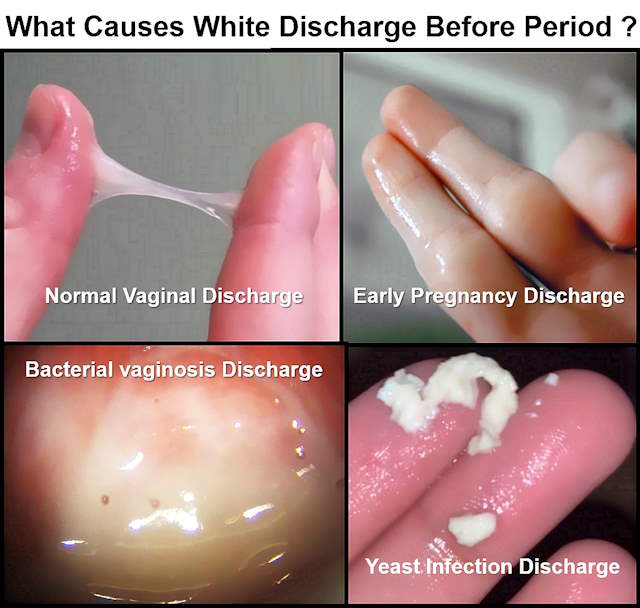White Discharge Before Period: Early Pregnancy Sign or Something Serious?
Vaginal discharge is a natural way for your body to keep the vagina healthy and protected from infections. Throughout your menstrual cycle, the appearance and consistency of discharge can vary. One common type is white discharge before period, which can have several causes, both normal and concerning.
On average, you might produce about a teaspoon of discharge daily. It can range from thick to thin, odorless, and may change in color from white to clear or even brown. These changes are primarily driven by hormonal fluctuations in your body.
What Is White Discharge?
The white discharge you notice before your period is often referred to as leukorrhea. It consists of fluid and cells shed from the vaginal lining and may sometimes appear slightly yellow. This type of discharge is most common during the luteal phase of your menstrual cycle, when progesterone levels are at their peak. While estrogen tends to make discharge clear and stretchy, progesterone gives it a cloudy or white appearance.
Some people use changes in discharge as a way to track fertility, a method known as natural family planning or the fertility awareness method. For example, thin, stretchy mucus is often associated with ovulation and high fertility, while thick white discharge before period is typically a sign of lower fertility, occurring after ovulation and before menstruation.

Other Causes of White Discharge Before Your Period
While white discharge before period is often a normal part of your menstrual cycle, it can also be influenced by other factors. Some of these are harmless, but others may require medical attention, especially if accompanied by unusual symptoms like a strong odor, irritation, or changes in texture.
Birth Control
Hormonal birth control methods, such as the pill, can influence hormone levels, leading to noticeable changes in vaginal discharge. Contraceptives that contain estrogen often cause an increase in discharge, which is typically normal and helps maintain a healthy vaginal environment. Additionally, progestins in birth control can make cervical mucus thicker, creating a barrier that makes it more difficult for sperm to travel, which is one of the ways these contraceptives help prevent pregnancy.
Some women may also notice a light brown discharge while on birth control. This can occur naturally, especially around the time of your period, or it may be due to breakthrough bleeding, which happens when small amounts of blood mix with vaginal secretions. While this is generally harmless, if breakthrough bleeding becomes frequent or bothersome, consulting a healthcare provider may help in finding a more suitable contraceptive option.
Pregnancy
If you notice white discharge before your period, it could be an early sign of pregnancy. During pregnancy, rising estrogen levels trigger an increase in vaginal discharge, a natural process that helps maintain a healthy reproductive environment. This discharge, known as leukorrhea, is typically clear or slightly white and tends to have a thinner, more watery consistency compared to the thicker discharge that occurs before a period.
Although early pregnancy discharge may resemble pre-period discharge, it is usually more abundant due to hormonal changes that support the developing embryo. Unlike discharge associated with infections, normal pregnancy-related leukorrhea should not have a strong odor or cause itching, irritation, or discomfort.
Other early signs of pregnancy that may accompany increased discharge include a missed period, breast tenderness, nausea, fatigue, and frequent urination. If you suspect pregnancy, taking a home pregnancy test or consulting a healthcare provider can help confirm it. However, if the discharge has an unusual color, a foul smell, or is accompanied by irritation, it may indicate an infection that requires medical attention.
Sexually Transmitted Infections (STIs)
Certain STIs, such as gonorrhea, chlamydia, and trichomoniasis, can cause changes in vaginal discharge. For example, chlamydia and gonorrhea may result in white discharge, while trichomoniasis can cause yellow or green discharge. Additional symptoms may include pelvic pain, bleeding between periods, and discomfort during urination or sex. However, some STIs may not show any symptoms at all, making regular screenings important.
Yeast Infection
A yeast infection, or candidiasis, is another common cause of thick white discharge before period. This discharge often resembles cottage cheese and is accompanied by itching and burning sensations. Factors like antibiotic use, hormonal birth control, and pregnancy can increase your risk of developing a yeast infection. Hormonal changes before your period can also create an environment that promotes yeast overgrowth.
Bacterial Vaginosis
Bacterial vaginosis occurs when there’s an imbalance in the natural bacteria in your vagina. This can lead to milky white discharge that may have a fishy odor and a thin, watery consistency. While the exact cause is unknown, factors like new sexual partners or using scented products near the vagina can contribute to this condition. Interestingly, about half of those affected may not experience any symptoms.
Understanding the potential causes of white discharge before period can help you determine whether it’s a normal part of your cycle or a sign of an underlying issue. If you experience unusual symptoms, such as a strong odor, irritation, or changes in texture, it’s always a good idea to consult a healthcare provider for further evaluation.
What Discharge to Expect Throughout Your Cycle
Understanding the changes in vaginal discharge throughout your menstrual cycle can help you identify what’s normal and what might need attention. After your period ends, it’s common to experience a few days of dryness. Following this, you may notice three to five days of white, cloudy, or sticky discharge. This phase, known as the follicular phase, occurs as an egg begins to develop.
As you approach ovulation, the discharge often becomes clear, stretchy, and watery. This type of discharge, often referred to as egg white discharge before period, is a sign of high fertility. It helps sperm travel more easily to the egg. Around this time, you might produce up to 30 times more discharge than usual.
After ovulation, white discharge returns as progesterone becomes the dominant hormone. The amount of discharge may increase, but it gradually thickens and becomes stickier, almost like glue. This phase typically lasts for 11 to 14 days. Just before your period, the discharge might appear slightly yellow or even brown, which is usually old blood leaving your body.
If you notice spotting or brown discharge around the time of your expected period, it could be a sign of implantation in early pregnancy. If your period is late and you experience spotting, consider taking a home pregnancy test.
When to See a Doctor
While white discharge before period is often normal, certain changes in discharge can indicate an underlying health issue. For example, thick white discharge accompanied by itching may suggest a yeast infection. Yellow or green discharge could signal an infection like bacterial vaginosis or an STI.
You should consult a healthcare provider if you experience any of the following symptoms:
- Pain, burning, or discomfort in and around the vagina
- Rash or sores, with or without discharge
- Discharge that resembles cottage cheese or is frothy
- A strong or fishy vaginal odor
- Bleeding between periods or after sex
STIs, if left untreated, can lead to serious complications like infertility. If you notice any unusual changes in your discharge, seek medical attention promptly. During your appointment, your healthcare provider will likely ask about your symptoms, medical history, and lifestyle. They may also perform a pelvic exam and take a swab of your discharge for testing. Treatment often involves antibiotics and lifestyle adjustments.
Preventing Infections
While you can’t change the natural color or amount of healthy discharge, there are steps you can take to reduce the risk of infections:
Preventing Yeast Infections
- Avoid douching or using scented products like tampons.
- Change tampons and pads frequently.
- Wear loose-fitting underwear and pants.
- Choose underwear with a cotton crotch.
- Change out of wet swimsuits and sweaty workout clothes promptly.
- Wipe from front to back after using the restroom.
- If you have diabetes, maintaining blood sugar control can also help.
Preventing STIs
Using barrier protection, such as condoms and dental dams, during every sexual encounter can significantly reduce the risk of STIs. Additionally, vaccinations against HPV and hepatitis B are recommended.
Preventing Bacterial Vaginosis
Avoid using harsh soaps or douches near the vaginal area. Instead, clean the area with warm water. Maintaining good hygiene and avoiding irritants can help prevent bacterial vaginosis.
The Bottom Line
Vaginal discharge is a natural part of your menstrual cycle, but infections can alter its color, texture, and smell. Noticing white discharge in your underwear before or after your period is usually nothing to worry about. The amount and consistency can vary from person to person. Some may see just a slight trace, while others might experience a more noticeable amount—sometimes up to a teaspoon. The color and texture may also differ, ranging from creamy white to clear and stretchy, similar to egg whites.
However, if your discharge is accompanied by unusual symptoms, it could indicate an underlying infection, and seeking medical advice is recommended.
Understanding what’s normal and what’s not is essential. If your discharge has a strong or unpleasant odor, appears bright yellow, green, or gray, or is linked to itching, swelling, burning, or irritation, it could signal an infection that requires medical attention.
FAQs About White Discharge Before Period
Is creamy white discharge before period normal?
Yes, creamy white discharge before period is usually normal and is often a sign that your body is in the luteal phase of your menstrual cycle. This phase occurs after ovulation and is characterized by higher levels of progesterone, which can cause the discharge to become thicker and creamier. However, if the discharge is accompanied by itching, a strong odor, or discomfort, it could indicate an infection and should be evaluated by a healthcare provider.
Can milky white discharge before period be a sign of pregnancy?
Yes, milky white discharge before period can sometimes be an early sign of pregnancy. During early pregnancy, increased levels of estrogen can lead to more discharge, which may appear milky white. If you also experience other symptoms like a missed period, nausea, or breast tenderness, consider taking a pregnancy test or consulting a healthcare provider.
What does it mean if I have white discharge instead of period?
If you notice white discharge instead of period, it could be due to several reasons. Hormonal imbalances, stress, or changes in your diet or exercise routine might delay your period. In some cases, it could also be an early sign of pregnancy. However, if this happens frequently or is accompanied by other symptoms like pelvic pain or unusual odor, it’s best to consult a healthcare provider to rule out underlying conditions.
Why do I have white discharge after period?
White discharge after period is typically normal and is part of your body’s natural cleansing process. After menstruation, your hormone levels begin to rise again, leading to an increase in discharge. This discharge helps keep the vaginal area clean and free from infections. However, if the discharge has a strong odor, unusual color, or is accompanied by itching, it could indicate an infection and should be checked by a healthcare provider.
What should I do if my period is 2 days late with white discharge?
If your period is 2 days late with white discharge, it could be due to various reasons such as stress, hormonal changes, or even early pregnancy. White discharge before a late period is often normal, but if you’re concerned, consider taking a pregnancy test or consulting a healthcare provider. If the discharge is accompanied by other symptoms like pain, odor, or itching, seek medical advice to rule out infections or other conditions.
Can stress cause changes in vaginal discharge?
Yes, stress can impact your menstrual cycle and vaginal discharge. High stress levels can disrupt hormone production, potentially leading to changes in the amount, color, or consistency of your discharge. If you notice significant changes in your discharge along with other symptoms like irregular periods, it’s a good idea to manage stress through relaxation techniques and consult a healthcare provider if needed.
How can I tell the difference between normal discharge and an infection?
Normal discharge is usually clear or white, odorless, and may vary in consistency throughout your cycle. Discharge caused by an infection often has a strong odor, unusual color (like yellow or green), and may be accompanied by itching, burning, or discomfort. If you’re unsure, it’s always best to consult a healthcare provider for an accurate diagnosis and appropriate treatment.
Can diet affect vaginal discharge?
Yes, your diet can influence vaginal discharge. A balanced diet rich in probiotics, such as yogurt and fermented foods, can promote healthy vaginal flora and reduce the risk of infections. On the other hand, a diet high in sugar or processed foods may increase the likelihood of yeast infections. Staying hydrated and eating a nutrient-rich diet can help maintain healthy discharge.
Is it normal to have no discharge before a period?
Yes, it’s normal for some people to have little to no discharge before their period. The amount and consistency of discharge vary from person to person and can change throughout the menstrual cycle. If you’re concerned about a lack of discharge or other changes in your cycle, consult a healthcare provider for personalized advice.
Can exercise impact vaginal discharge?
Exercise can influence vaginal discharge, especially if it leads to hormonal changes or increased sweating. Wearing breathable, moisture-wicking clothing during workouts and changing out of sweaty clothes promptly can help maintain vaginal health. However, if you notice unusual discharge after exercise, such as a strong odor or irritation, it could indicate an infection and should be evaluated by a healthcare provider.










